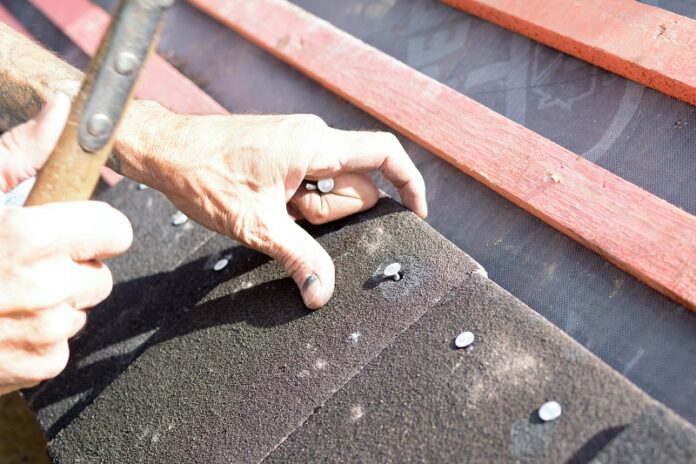Just as with everything else in life, there comes a time when your roof begins to wear out. You can try to repair it as problems arise, replacing things here and there, but eventually, the roof will hit a point where it makes more financial and structural sense to just replace the entire thing. When this happens, it’s vital that you take the necessary steps to get it replaced as soon as possible to avoid causing damage to the rest of your house.
Replacing the roof of a home is a big job, but when the roof you have begins to fail it’s better to get it taken care of as soon as possible. A proper removal and replacement job should only take about two to four days, and once it’s done you can be rest assured you can rely on it to protect your home for the next about twenty to thirty years.
Remove the Old Roof
The first step, obviously, is to remove the old roof. This process sounds a lot easier than it actually is. The roofing crew you hire will need to work carefully to avoid damaging the underlying structure of your home as they pry off things such as old shingles and roofing materials like tar paper and roofing felt. They will also need to be careful of any nails or staples that are left behind, as these could cause serious injuries if someone stepped on them during the removal process.
Perform Necessary Repairs
Once the old roof is removed and completely cleared away, the roofing crew must take a moment to assess if any repairs should be made. Things such as rotted decking or damaged trusses need to be repaired before a new roof can be put in place. This is because the new roof will be built on top of these existing structures, and if they’re not in good condition it could lead to other problems down the road.
Begin the Installation Process
The process will begin by installing a drip edge, which is a metal strip that helps to keep water away from the roof deck. Next, they’ll install felt paper or another type of underlayment to help protect the roof deck from water damage. The next step is to install the new roofing materials, which will be either shingles or some other type of roofing material. The roofer will then install flashing around any vulnerable areas, such as skylights or chimneys. Finally, they’ll install the ridge cap, which helps to protect the edges of the roof from water damage.
Final Inspections and Cleanup
Once the new roof is installed, the roofing crew will need to do a final inspection to make sure everything looks good and that there are no unaddressed or potential problems with the roof or the installation. They’ll also need to clean up any debris that’s left behind, such as old nails or pieces of roofing material that may have been forgotten when the old roof was removed. Once the area is cleaned up, the job is done and you can enjoy the lack of roof problems.
When it’s time to replace your roof, it’s important to hire a qualified roofing crew to handle the job. They will need to remove the old roof, assess for any necessary repairs, and then begin the process of installing the new roof. Once the new roof is in place, they will do a final inspection and clean up any debris that’s left behind. With a new roof, you can enjoy peace of mind knowing your home is well-protected from the elements.















